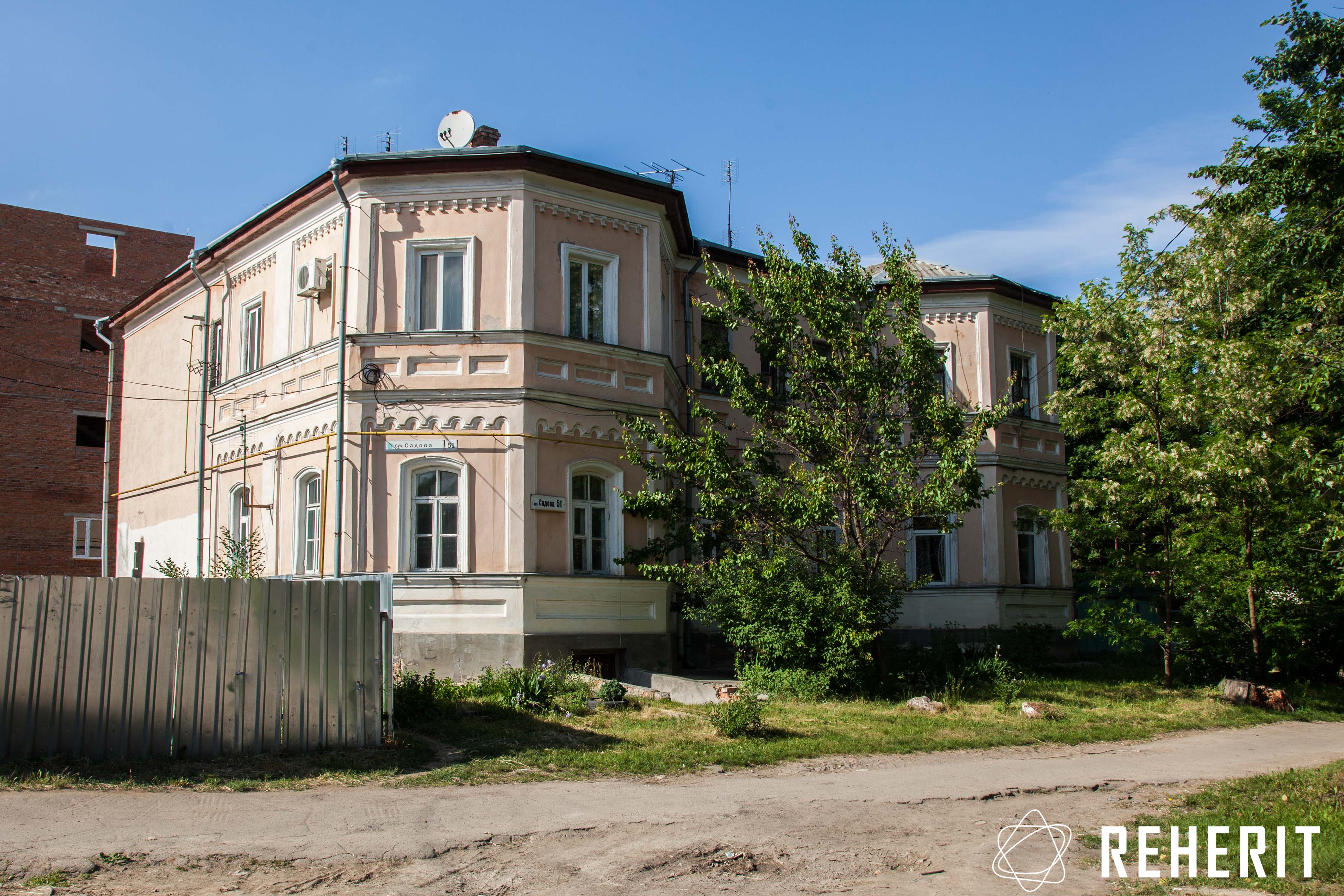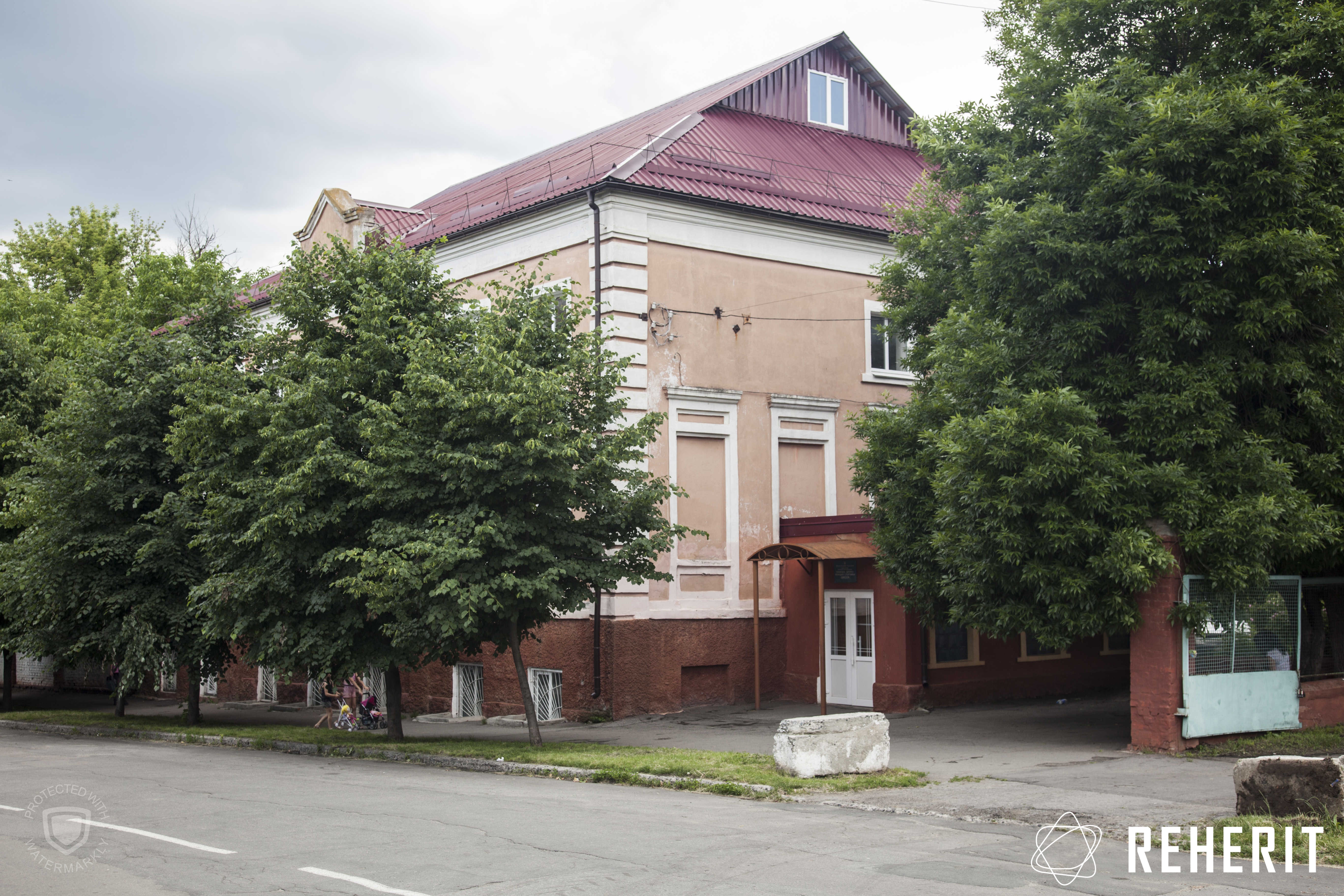English below ↓
У 1939 році в Умані проживало 13233 євреї (29,8% від загальної кількості міських мешканців). У 1941 році їх залишилося щонайменше 9 тисяч. Частину чоловіків призвали до лав Червоної армії, і вони поїхали з Умані, залишивши свої родини в місті. Водночас до Умані приїздили біженці із східних територій Польської держави (зараз це західноукраїнські землі) – серед них були і євреї.
На території Рейхскомісаріату “Україна” масові вбивства євреїв проводилися від самого початку окупації. За німецькими військами до міст та сіл входили айнзацгрупи – спеціально створені оперативні частини для ліквідації обраних категорій населення на окупованих територіях. В окремих містах створювали гетто, які існували недовго: людей примусово збирали тут для нетривалої ізоляції перед фізичним винищенням.
Єврейське населення Умані було серед перших жертв нацистської окупаційної політики. Напади на євреїв і одиничні вбивства в Умані розпочалися одразу після вступу німецьких військ до міста 1 серпня 1941 року. Євреї були змушені пройти реєстрацію – задля легшої ідентифікації їх зобов’язали носити на руці білі пов’язки з шестикутними зірками. Тих, хто не вдягав їх, жорстоко били й обкладали високим штрафом.
Дослідження історика Голокосту Андрія Усача розкривають подальше розгортання насильства в місті. Першу масову антиєврейську акцію в Умані було проведено наприкінці вересня 1941 року. Зранку 21 вересня 1941 року центром міста прокотилася облава на євреїв, яку здійснювали німецькі військові та місцева допоміжна поліція. Людей затримували на вулицях, силою забирали з помешкань. Частину захоплених, переважно жінок, дітей та літніх людей, зігнали до підвального приміщення Палацу піонерів на вулиці Леніна (нині Європейська). Вщент заповнений людьми підвал закрили наглухо. До ранку наступного дня багато ув’язнених померли від нестачі кисню. Тут загинуло до 500 осіб, серед жертв було багато дітей. Тих, хто витримав, звільнили зранку 22 вересня.
Інших затриманих, передусім чоловіків, конвоювали до міської в’язниці, де вони стали жертвами знущань і приниження. Їх били та змушували танцювати. Наступного дня їх змусили викопати яму на єврейському цвинтарі і перевезти туди тіла загиблих з підвалу Палацу піонерів, а потім розстріляли. Вбивства євреїв Умані тривали кілька днів. Айнзацкоманда 5 звітувала, що впродовж 22-23 вересня 1941 року стратила в Умані 1412 осіб.
Тим євреям, хто не став жертвами вбивств, окупаційна влада наказала переселятися до гетто. Для нього було обрано частину старого єврейського кварталу міста (Раківки), що сформувався довкола міського базару. Центром гетто стала вулиця Східна, охоплювало воно також вулиці Некрасова, Демуцького, Челюскінців, Шолом-Алейхема. Катерина Запорожчук в інтерв’ю проєкту “Історії життя” (Німеччина) пригадувала, що, оскільки її родина мешкала на вулиці Східній, вони не мусили переїздити, проте в їхній будинок переїхало ще десять єврейських родин з інших частин міста. В’язням гетто було заборонено залишати територію без дозволу влади – карою за непослух був розстріл.
Умови перебування в гетто були спрямовані на придушення волі до спротиву та дегуманізацію в’язнів. За спогадами Мані Файнгольд, поліція при переселенні, знущаючись, не давала зібрати потрібних речей, тому в гетто люди одразу стикалися із відсутністю найнеобхіднішого. Тут бракувало їжі, люди були позбавлені медичної допомоги. В’язнів гетто сприймали як безкоштовну робочу силу, щоденно змушували працювати на фізично важких чи принизливих роботах (наприклад, дівчат змушували прибирати вбиральні руками). Кожної миті людина почувалася тут вразливою і незахищеною. У більшості спогадів людей, що пережили Голокост в Умані, фігурують історії про нічні рейди до гетто німецьких вояків та місцевої допоміжної поліції. Як свідчила Раїса Дудник: “Кожної ночі п’яні бандити вдиралися до наших будиночків. Ґвалтували дівчат. Били літніх жінок, забирали останнє”. Для кращого контролю над мешканцями в гетто було створено орган управління – юденрат. Відомі прізвища двох євреїв, які його очолювали, – Самборський і Табачник.
Більшість в’язнів гетто прожили тут лише кілька тижнів. 8 жовтня 1941 року було проведено другу масштабну акцію проти євреїв Умані. Людей з гетто примусово зібрали на площі Старого базару, звідти відвели до в’язниці, де змусили здати цінні речі і документи та зняти верхній одяг. Маленьких дітей, літніх та важкохворих людей відвезли на вантажівках, а решту конвоювали пішки, колонами по 500-600 осіб, до урочища “Сухий Яр” за 2 км на північний захід від Умані. Тих, хто не міг іти або намагався втекти, вбивали по дорозі.
В урочищі вже були підготовлені три великі ями. Євреїв підводили до них групами по п’ять осіб, змушували лягати на тіла розстріляних перед ними і вбивали пострілами в голову. Виконавцями масової страти стали вояки 304 резервного поліцейського батальйону. Опис цієї масової страти залишила Маня Файнгольд: “Вони підходять по п’ять осіб, стають над ямою і отримують свою кулю. На дні ями лежали живі євреї – старі люди, каліки, для них шкодували куль, на них падали вбиті і поранені євреї, і через це старі і каліки задихалися. Євреїв ставало усе менше, вони по п’ять підходили і їх стріляли, але кожен з цього натовпу намагався стати заднім, аби прожити ще кілька хвилин, інші не могли пережити усе це і бігли раніше, ніж приходила їхня черга. Тут само стояли німці, сміючись, фотографували цю картину...”.
За даними дослідника історії Голокосту в Україні Олександра Круглова, у Сухому Яру були вбиті близько 6000 осіб, з них 600 євреїв з числа радянських військовополонених.
На території гетто дозволили залишитися лише людям, яких визнали кваліфікованими спеціалістами, чия праця могла бути корисною владі. Також було оголошено, що більше євреїв не вбиватимуть. Тому люди, які змогли переховатися під час вивезення гетто, наважилися повернутися. Автори дослідження “Холокост в Украине: Рейхскомиссариат Украина, Губернаторство Транснистрия” Олександр Круглов, Андрій Уманський та Ігор Щупак наводять уривок розпорядження міського комісару Умані про організацію життя у гетто, надрукованого 26 лютого 1942 року у газеті “Уманський голос”. Влада прагнула закріпити ізоляцію єврейської громади: категорично заборонялися будь-які контакти між євреями та українцями, євреї не мали права продавати містянам своє майно та займатися ремеслами, на під’їздах до гетто передбачалося поставити щити із написами: “Увага! Гетто! Вхід українцям заборонений під загрозою штрафу”, причому кошти на встановлення щитів мусили надати євреї.
22 квітня 1942 року гетто в Умані остаточно ліквідовано. На той час у ньому перебувало близько 1500 осіб. Зібраних людей поділили на дві групи. Тих, кого визнали працездатними, вивезли до трудового табору у с. Кузьмина Гребля, що за 14 км від Умані. Решту розстріляли у лісі поблизу міста.
З тисяч євреїв, що залишилися в Умані у 1941 році, до кінця війни дожили одиниці. Внаслідок Голокосту місто фактично втратило свою єврейську спільноту. Разом із людьми пішла в небуття і пам’ять про довоєнний світ єврейської Умані.
У радянський час доля і загибель євреїв Умані стала замовчуваною темою, схованою за загальною фразою про “цивільних громадян-жертв фашизму”. До останнього часу місце розташування гетто в Умані не було маркованим у міському просторі, його історія тільки починає вивчатися спеціально. Відвертіше починають говорити і про особливості ставлення українського та російського населення міста до масових вбивств місцевих євреїв. Адже трагічна особливість територій УРСР та БРСР полягала в тому, що євреїв вбивали там, де вони проживали, буквально на очах у сусідів, які мусили реагувати. І реакція була дуже різною: окрім байдужості, вона коливалася від добровільної співучасті у насильстві до готовності рятувати із ризиком для власного життя. Більшість спогадів про Голокост в Умані говорить про активну участь містян у грабунках квартир зігнаних до гетто євреїв і про осіб, що виказували німцям тих, хто намагався ховатися. І поруч є історії порятунку євреїв, неможливого без підтримки сусідів – 14 уманців вшановані званням “Праведник народів світу”.
АВТОРКА ТЕКСТУ: Тетяна Портнова.
Уманське гетто є одним з 10 об'єктів, ознакованих в Умані у ході реалізації проекту ReHerit. Об'єкти актуалізують теми, місця та імена спільної спадщини міста. Детальніше про маршрут та інші його об'єкти за посиланням.
The Uman Ghetto
Today's Skhidna, Nekrasov, Demutskyi, Cheliuskintsi and Sholom-Aleichem Streets
In 1939 Uman was home to 13,233 Jews (29.8 per cent of the city’s total population). By 1941 there were at least 9,000 Jews remaining. Some of the men had been drafted into the Red Army, and they left the city and their families behind. At the same time, Uman saw an influx of refugees from Eastern Poland (today’s Western Ukrainian lands), some of whom were Jews.
Mass murder of Jews was underway from the very start of the occupation in the territory of the Reichkommissariat Ukraine. Einsatzgruppen (special operative units created with the aim of liquidating particular categories of people in occupied territories) followed German military into the towns and villages. In some cities, ghettoes were established, which usually didn’t last long: Jews were forced into short-lived isolation here prior to being physically destroyed.
The Jewish population of Uman was among the first victims of Nazi occupation policy. Attacks on Jews and individual killings began immediately upon the German troops entry into the city on August 1, 1941. Jews were required to register – to make them more readily identifiable, they were forced to wear white armbands with hexagonal Stars of David. Those who did not comply with the new requirement were harshly beaten and heavily fined.
Holocaust historian Andrii Usach’s study reveals further escalation of violence in the city. The first mass Jewish action in Uman took place in late September, 1941. On the morning of September 21, a Jewish raid was carried out in downtown Uman by German military and the local auxiliary police. People were detained in the streets or forcibly removed from their residences. Some of those gathered in this way – mostly women, children, and the elderly – were pressed into the cellars of the Palace of Pioneers in Lenin (now Yevropeiska) St. Crammed with people, the cellar was locked. By next morning, many of the prisoners died of lack of oxygen. Up to 500 people died here, including many children. Those who survived, were released on the morning of September 22.
Anothe part of those detained – mostly men – were marched to the town prison, where they were subjected to abuse and humiliation. They were beaten and forced to dance. The next day they were told to dig a hole in the Jewish cemetary and convey the bodies of those who died in the cellar of the Palace of Pioneers there. Afterwards, they were shot. Killings of the Jews of Uman lasted for several days. Einsatzkommando 5 reported that on September 22-23, 1941, they executed 1,412 people in Uman.
Those Jews who did not perish in the killings, were ordered by the occupation authorities to move to the ghetto. This was located in part of the old Jewish quarter of Uman, called Rakivka, which had arisen around the city market. Skhidna became the main street of the ghetto, which also encompassed Nekrasov, Demutskyi, Cheliuskintsi, and Sholom-Aleikhem Streets. In an interview with the German Jüdische Lebensgeschichten (“Jewish Life Stories“) project, Kateryna Zaporozhchuk recalled that, because their family lived in Skhidna, they didn’t have to move, but ten additional Jewish families were moved into her building from other parts of he city. On pain of being shot, ghetto prisoners were prohibited from leaving the territory without permission from the authorities.
Living conditions in the ghetto were aimed at suppressing the will to resist and dehumanizing the prisoners. According to Mania Faingold’s recollections, the police would not let people collect necessary things in the course of the move, so in the ghetto people immediately face a lack of basic necessities. There was no food, nor any medical assistance. Ghetto prisoners were perceived as free workforce, made to work physically demanding or humiliating jobs (girls, for instance, were forced to clean lavatories with their bare hands). At every moment the prisoner here felt vulnerable and exposed. Recollections of most of those who survived the Holocaust in Uman feature stories of night-time raids into the ghetto by German soldiers and the local auxiliary police. According to Raisa Dudnyk: “Every night drunken pillagers would break into our houses. They would rape girls. They would beat elderly women, taking the last of their possessions.” The better to control the ghetto’s residents, a Judenrat (“Jewish Council”) was formed. The names of the two Jews who headed it are known – Samborskyi and Tabachnyk.
Most of the ghetto’s prisoners only lived here for a few weeks. A second massive Jewish Aktion in Uman was organized on October 8, 1941. People from the ghetto were forced into the site of the Old Market, then taken to the prison, where they were forced to surrender their valuables, papers, and remove their outer garmnets. The little children, elderly and sick were taken on trucks, the rest were marched on foot, in columns of 500-600 people, to the Sukhyi Yar ravine, 2 kilometers northwest of Uman. Those who could not walk or tried to escape, were killed along the way.
Three large pits were already waiting in the ravine. Jews were lined up in front of them in groups of five, forced to lie down atop the bodies of those executed before them, and killed with shots to the head. The mass execution was carried out by soldiers of the 304th Reserve Police Batallion. The mass execution scene was described thus by Mania Faingold: “They come up, five people at a time, stand above the pit, and get their bullet. The bottom of the pit had people who were still alive – old or disabled people, for whom the executioners didn’t want to waste a bullet; dead bodies would fall on them, and so the old and the disabled would suffocate. There were fewer and fewer Jews, they would come up [in groups of] five, and be shot, but everybody in the crowd tried to get in the back [of the line] to live for another few minutes; others couldn’t stand it and would run before their turn. Germans stood there, too, and photographed the scene, and laughed...”.
According to Oleksandr Kruhlov, who studies the history of the Holocaust in Ukraine, about 6,000 people were executed in Sukhyi Yar, 600 of them were Jews from the number of Soviet POWs.
Only people recognized as qualified specialists, those whose labor was useful for the occupation authorities, were allowed to remain in the territory of the ghetto. It was also announced that there would be no more killings of Jews. For this reason, people who managed to hide during the evacuation of the ghetto, dared to return. Oleksandr Kruhlov, Andrii Umanskyi, and Ihor Shchupak, authors of the study “Holocaust in Ukraine: Reichskommissariat Ukraine, Transnistria Governorate” show an excerpt form an order by Uman’s City Commissar about the organization of ghetto life, printed on February 26, 1942 in the “Voice of Uman” paper. The authorities wanted to strengthen the isolation of the Jewish community: any contacts between Jews and Ukrainians were strictly prohibited, Jews were disallowed from selling their property to other residents of the city, or practice any craft or trade, billboards were to be installed at the entrances to the ghetto with the inscription “Warning! Ghetto! Entrance for Ukrainians Prohibited, Tresspassers Will Be Fined,” and installation was to be paid by the Jews.
The Uman ghetto was finally liquidated on April 22, 1942. There were circa 1,500 people living there at the time. They were divided into two groups. Those deemed fit for work were sent to the labor camp in the village of Kuzmyna Hreblia, 14 kilometers outside of Uman. The rest were shot in a nearby forest.
Of the thousands of Jews who had remained in Uman as of 1941, but a few people survived until the end of the war. As a result of the Holocaust, the city lost almost the entirety of its Jewish community. Along with the people, the memory of the prewar world of Jewish Uman also sank into oblivion.
In the Soviet period, the fate and the destruction of the Jews of Uman were not spoken about, hidden behind the general phrase about “civilians who fell victims of fascism.” Until recently, the site of the former Jewish ghetto was not marked in the city space, and its history is only now starting to be carefully studied. Attitudes of the Ukrainian and Russian population to the killing of local Jews are also just beginning to be discussed. After all, a tragic detail of the territories of the Ukrainian and Belarusian Soviet Socialist Republics is that the local Jews were killed where they had lived, before their neighbors’ very eyes. A reaction was thus unavoidable, and varied greatly: in addition to indifference, it ran the gamut from willing collaboration in the violence to readiness to rescue at risk to one’s own life. Most recollections of the Holocaust in Uman speak of the locals’ eager participation in the plunder of the apartments of Jews sent to the ghetto, and of people reporting those who were trying to hide. Along with these stories, there are stories of escape, impossible without neighbors’ support. 14 residents of Uman have been recognized as Righteous Among the Nations.
TEXT BY Tetiana Portnova
This text is an extended description of an object marked in the urban space as part of a project dedicated to marking ten objects of cultural heritage. You can learn more about the projects and find links for the other 10 objects here.









